
The controller is one of the three core components of industrial robots, and it acts as the brain of the robot. Its quality directly determines the performance of the robot. Therefore, whether it is ABB, KUKA, or domestic suppliers like Siasun and Xinshida, all major industrial robot suppliers have taken control of the controller.
The development goal of industrial robots is to develop industrial robot system integration technology, mainframe design technology, and key component manufacturing technology that meet user needs, breaking through a number of core technologies and key components, enhancing the reliability and stability of mainstream products, and promoting the large-scale demonstration application of industrial robots in important industrial manufacturing fields.
As the largest industrial robot market in the world, China’s demand for industrial robots accounts for about one-third of the global demand. With the stimulation of huge demand and support from national policies, China’s industrial robot industry has made significant progress. According to relevant statistics, from January to November 2017, the cumulative production of industrial robots in China reached 118,170 units, a year-on-year increase of 68.8%, making it one of the fastest-growing products.
Against this backdrop, the industrial robot controller has also experienced explosive growth. It is predicted that in 2017, the market size of robot controllers will reach 878 million yuan. Like controllers, software is generally designed and developed independently by robot manufacturers.
Currently, mainstream foreign robot manufacturers’ controllers are developed independently based on a general multi-axis motion controller platform, and each brand of robot has its own control system to match. Therefore, the market share of controllers is basically consistent with that of robots, and domestic companies have not yet formed a competitive advantage in the controller market.
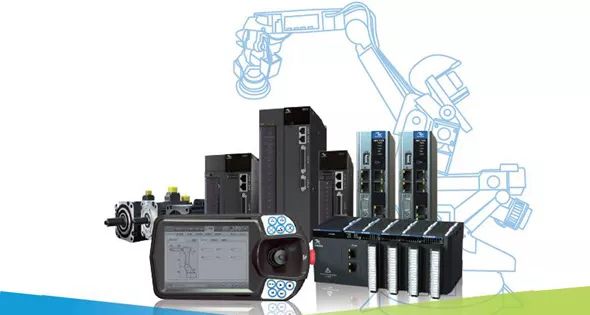
Current Research Status of Industrial Robot Controllers
With the rapid development of microelectronics technology, the performance of processors has become higher and prices have become cheaper. High-cost performance microprocessors make it possible to develop low-cost, high-performance industrial robot controllers.
To ensure that the system has sufficient computing and storage capacity, most industrial robot controllers currently use chips with strong computing power, such as ARM series, DSP series, POWERPC series, Intel series, etc. In addition, since existing general-purpose chips cannot fully meet the requirements of certain industrial robot systems in terms of price, performance, integration, and interfaces, there is a demand for SoC (System on Chip) technology in industrial robot systems, which integrates specific processors with the required interfaces to simplify the design of peripheral circuits, reduce system size, and lower costs.
Currently, there is no dedicated servo communication bus for industrial robot systems internationally. In practical applications, common buses such as Ethernet, CAN, 1394, SERCOS, USB, RS-485, etc., are usually used in industrial robot systems according to system requirements.
In terms of controller architecture, the research focus is on the division of functions and the specification of information exchange between functions. In the research of open controller architecture, there are two basic structures: one is based on hardware-level division, which is relatively simple. In Japan, the architecture is divided based on hardware. For example, Mitsubishi Heavy Industries divides the structure of its PA210 portable universal intelligent robotic arm into five layers; the other is based on functional division, which considers both hardware and software and is the direction for research and development of industrial robot controller architecture.
Since most hardware is purchased externally, industrial robot suppliers can almost all buy the same hardware, while software often becomes the core of industrial robot controllers. Most industrial robot suppliers have their own independent development environments and programming languages for industrial robots. Many universities have done extensive research on the industrial robot development environment (Robot Development Environment) and have provided a lot of open-source code that can be integrated and controlled under certain industrial robot hardware structures, with many related experiments conducted in laboratory environments.
With the development of industrial robot control technology, a current development direction for industrial robot controllers is to develop “modular and standardized industrial robot controllers with open structures” to address the shortcomings of closed structure industrial robot controllers.
Next, let’s take a look at the status of major industrial robot controller brands at home and abroad.
ABB

The IRC5 controller is an industrial robot controller developed by ABB, consisting of a control module and a drive module, with an optional process module to accommodate custom devices and interfaces such as spot welding, arc welding, and gluing. The flexible controller equipped with these three modules is fully capable of controlling a 6-axis industrial robot plus servo-driven workpiece positioners and similar devices. If the number of industrial robots needs to be increased, only one drive module needs to be added for each new industrial robot, and a process module can also be selected, allowing up to four industrial robots to operate in MultiMove mode. Only two connection cables are needed between the modules, one for safety signal transmission and the other for Ethernet connection for communication between modules, making module connections simple and easy.
KUKA
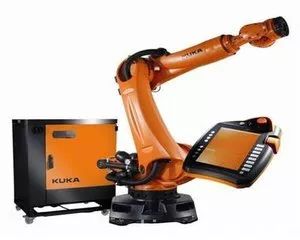
KRC4 is a new system architecture developed by KUKA that is clear in structure and focuses on using open and efficient data standards. All safety controls (Safety Control), industrial robot control (Robot Control), motion control (Motion Control), logic control (Logic Control), and process control (Process Control) integrated into this system architecture share the same data foundation and infrastructure, allowing for intelligent use and sharing. This results in the system having the highest performance, upgradability, and flexibility.
KEBA
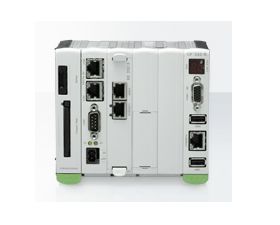
KEBA is not an industrial robot manufacturer, but one of the few non-industrial robot manufacturers in the industrial robot controller industry. Its products are industrial-grade servo control systems capable of controlling multi-degree-of-freedom industrial robots. This control system ensures real-time operation of the software environment through the VxWorks platform or Windows + RTX real-time extension platform. Through motion planning and motion control units, it can achieve precise control of bus-type servo drives, thus achieving accurate control of industrial robots.
The KeMotion r5000 series controller is a complete modular controller for multi-axis motion control systems. The hardware includes the KeMotion controller and various peripheral modules, which are connected to the controller via Ethernet or bus to achieve various application combinations. The core part of the control system software is a complete set of software running on the controller hardware platform (x86 embedded microprocessor). From the bottom up, the underlying OS is the VxWorks real-time operating system, which provides a foundation for the system’s real-time performance and reliability, while also providing a runtime environment for application software.
FANUC

FANUC Robot R-30iA is a new generation industrial robot controller developed by FANUC, featuring high performance, fast response, and strong safety performance. As the only industrial robot controller integrated with vision capabilities, it significantly reduces the cost of peripheral devices required for flexible production. Various powerful specialized software for spot welding, gluing, handling, etc., developed based on FANUC’s own software platform, not only simplifies the operation of industrial robots but also provides complete immunity against computer viruses.
Yaskawa
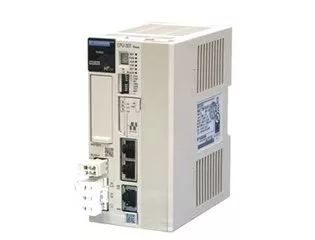
Yaskawa has developed an open-structured, network-capable industrial robot controller based on PC development. In 2016, Yaskawa also launched a robot controller equipped with artificial intelligence, capable of automatically setting welding conditions and accurately predicting the lifespan of the robot body. This will contribute to improving the efficiency of startup operations and reducing downtime during mechanical obstacles.
The AI in the controller can autonomously seek the best welding conditions and reflect them in the robot’s actual operations. Typically, when welding multiple positions, different conditions need to be set. The new controller’s setting work section has achieved automation. In addition to welding, it also considers applications in fields requiring fine adjustments in painting, processing, and other robotic arm front-end actions.
Zhejiang Zhichang

Zhejiang Zhichang Industrial Co., Ltd.: Founded by Ganjunxue, an expert from the first batch of the national “Thousand Talents Program,” chairman of the Zhejiang Robot Industry Group, and chairman of the Ningbo Intelligent Manufacturing Industry Research Institute, focuses on the entire industrial chain of intelligent factory solutions, robot applications, and core component development. As a market transformation platform for key technological innovations, Zhichang Group deeply understands that mastering independent brands is essential to seize the market and is committed to developing robot products with independent intellectual property rights, breaking the monopoly of foreign brands in critical components of robots, and truly realizing the national dream of “intelligent manufacturing.”
Under the leadership of Dr. Ganjunxue, a specially appointed expert from the national “Thousand Talents Program,” Zhichang Group spent 30 months and invested nearly 40 million yuan to develop the Ruizhi intelligent robot controller and held its first product launch conference.This product not only overcomes the bottleneck in domestic research on robot motion control but also breaks the foreign monopoly on high-performance controller technology for industrial robots.
Siasun Robotics
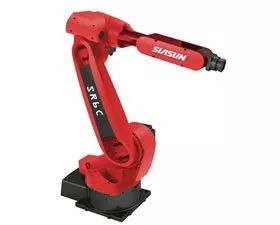
Siasun is a giant in China’s industrial robot sector, with its SIASUN-GRC robot controller having independent copyrights and practical, commercialized design. This robot controller is reasonably designed, technically advanced, performs excellently, is reliable, and easy to use. It adopts AC servo drive, absolute encoder detection, and a large-screen Chinese teaching programming box, among other latest technologies, forming an advanced high-performance robot control system. The overall performance of this system has reached the international advanced level and is the first marketable robot controller in China, capable of small-batch production.
Xinsida
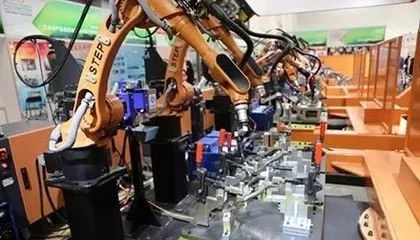
With nearly 20 years of R&D accumulation in electrical control, servos, and controllers, Xinsida has mastered robot and motion control technology and is one of the companies with the highest degree of independence among domestic robot brands. It is reported that the robot body, controller, software system, and drive control system in Xinsida’s robot intelligent system are all independently developed.
Guangzhou CNC

Based on rich experience in CNC machine tool technology, Guangzhou CNC has mastered complete intellectual property rights for robot controllers, servo drives, and servo motors, among which GSK-RC is a robot controller independently developed and produced by Guangzhou CNC with independent intellectual property rights.
Huazhong CNC
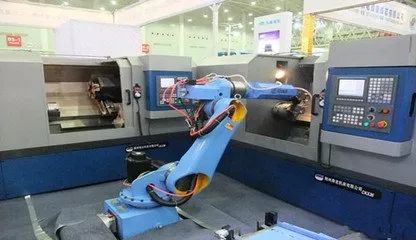
Huazhong CNC developed the Huazhong I-type robot control system as early as 1999. After nearly 20 years of development, it has significant technological advantages in the three core component areas of controllers, servo drives, and motors.The CCR series is the robot control system mainly developed by Huazhong CNC.
Goko Technology
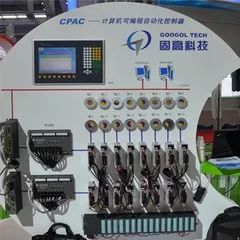
Goko Technology began developing four-axis robot controllers in 2001 and entered the six-axis robot controller field in 2006, becoming one of the earliest companies to research robot controllers in China. As of now, Goko’s control systems cover various types of robots from three-axis to eight-axis, with the most technically challenging eight-axis robot control system already capable of mass production.
Inovance Technology

Inovance Technology started with frequency converters and servos, expanding into the controller field in 2013. In 2014, Inovance Technology launched the IMC100 robot controller based on the EtherCAT bus and the IS620N bus-type absolute value robot-specific servo system, currently mainly targeting emerging application fields such as small six-axis, small SCARA, and parallel robots.
☞Source: Industrial Robots

Past Review|001 Lecture by Wang Tianmiao—Hotspots and Trends in Domestic and International Robot Development
Past Review|002 Lecture by Siasun President Qu Daokui—The Critical Point of Robot Development
Past Review|003 Lecture by Liu Guoqing, Executive Director of Zhongmin International Capital—Digital Factories and Artificial Intelligence
Past Review|004 Lecture by Zhao Sheng—Industrial 4.0 and Robots from a Global Perspective
Past Review|005 Lecture by Gan Zhongxue—From Intelligent Industrial Robots to Smart Industrial Robots
Past Review|006 Lecture by Changjiang Scholar Wang Shuxin—Innovations in Minimally Invasive Surgical Robot Technology and Industry Development
Past Review|007 Lecture by Harbin Institute of Technology Professor Du Zhijiang—Research Experience of Domestic Surgical Robots
Past Review|008 Lecture by 80s Doctor Qi Juntong—Frontier Technology of Intelligent Control for Drones
Heavyweight|Tsinghua University Professor Breaks Through the Last 1cm Barrier for Robots
A Class Diving to 7000 Meters! Revealing the Rare Dark Biological Chain + Jiaolong’s “Dragon Brain”
Investment Blue Ocean + National Defense Responsibilities! Shanghai University Breakthroughs in Key Technologies for Unmanned Boats Fill China’s Gaps
Do Drones Also Have “Big and Small Brains”? Hunan TV Idol-Level 80s Scientist Shares Multiple Innovative Breakthrough Technologies
For cooperation intentions, article reprints, please contact Dr. Tang at: 13810423387 (same as WeChat).
For all these needs, please contact WeChat: 35735796.